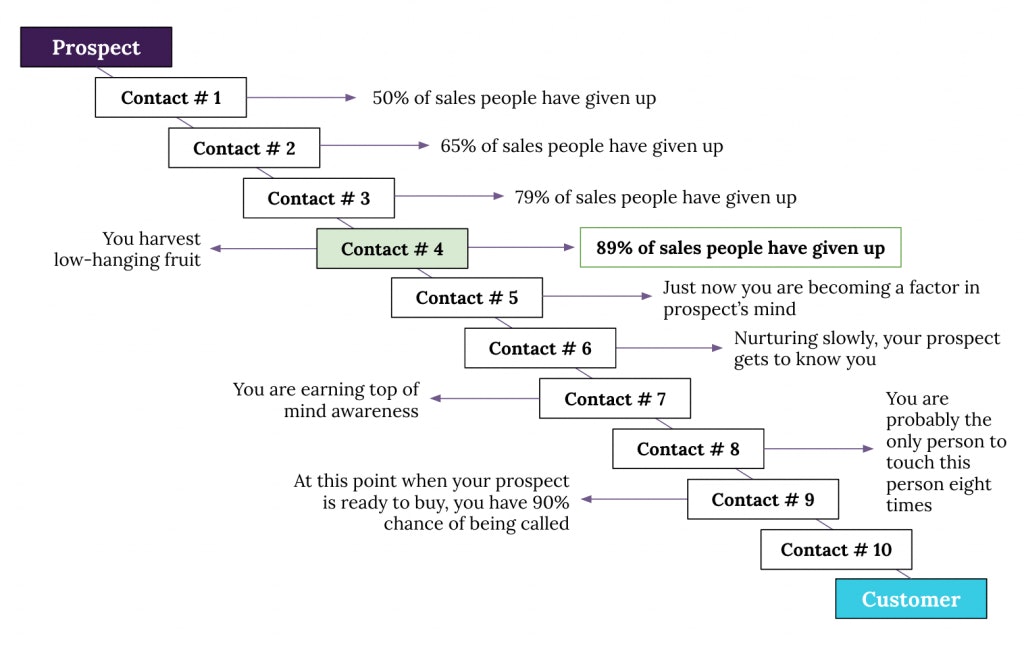While no one can argue against the idea that the rate of change in marketing is ever increasing, I believe sometimes we are too quick to try something completely new at the expense of doing the hard (and not as fun) work of making something old work better.
Enter email.
If you’ve been in marketing at all in the past 10 years, chances are you have designed, proofed, tested, developed, and sent your fair share of email. It’s everywhere – and I think this makes us lazy as marketers. We think we already have it figured out, the same old thing bores us and we get content with the open rates and strategies that we have been using for a while now.
Whether you’re a pro or are somewhat new to marketing, here are some clever ways we have used email to keep the message and brand fresh.
1) Follow-up to a tradeshow
Companies in the B2B space spend tens and hundreds of thousands of dollars on tradeshows every year. The booth space, booth, entertainment, hotels, travel, and food – it adds up quickly. I know in many of the industries we work with, attending tradeshows has slowly degraded from “we go because it drives revenue and is positive for our business” to “we go to the tradeshow because everyone in our industry goes – even though it’s pointless. It says something if we’re not there.”
This creates an awesome opportunity if you’re paying attention. Think about it. Everyone is apathetic about the tradeshow – what if you stepped up and followed up?
See if you can get a special SPIF for sales people if they close leads from the tradeshow. Your company has already invested thousands, what’s a few hundred more?
On the other hand, if it is well-attended by customers and prospects you would be astounded by the number of people who don’t follow up past the interaction in the booth. Sales teams gather hundreds of business cards and tons of contact info when they’re at the tradeshow booth, and then when they get back to their desks on Monday regular life takes over and the stack of business cards is left to collect dust. I don’t have hard and fast statistics to back this up, but I can assure you after over ten years of experience in the B2B marketing space that this is exactly what happens.
There is so much energy and focus put on the pre-event and tradeshow readiness that anything having to do with post-show follow-up gets completely overlooked. It’s not that they don’t want to follow-up – most just never find the time to make it happen.
2) Instant access when you need to apologize
Sometimes things go wrong. And when they do, customers are more interested in how the brand apologizes than raking the brand over the coals for messing up in the first place. According to Oracle’s Customer Experience Impact Report, over 89 percent of consumers began doing business with a competitor following a poor customer experience. Conversely, that same report found that when an organization responded to a customer’s negative comment, 46 percent of those individuals were pleased, and 22 percent followed up by posting a positive comment about the organization.
Airstream launched a campaign announcing their new Pendleton special edition trailer and the response was so strong that the traffic took down the website. Not a good day when thousands of people are trying to access more information about your product and the only thing they see is an error code.
Because Airstream already had their database organized and connected to an email marketing tool (in this case, HubSpot), within the day we were able to construct an email response. This email did a couple of things: it apologized in a tone and attitude that was aligned with the brand, and it garnered media attention for the manner in which it was handled.
The lesson here? Every brand has a bad day – be sure you’re ready to respond in a timely and relevant manner.
3) Decrease the cost of a sale
While successful email marketing does take time, the investment in email is a fraction of what you’re spending elsewhere to achieve the same results. As the number of competing messages reaching your prospect continues to increase, capturing their attention becomes even more of a game of both quality and quantity. Most prospects won’t even pick up the phone to speak with your salesperson until they’ve received seven to ten touches. At this point, nearly 100% of other salespeople have given up on the opportunity.
And not for a bad reason – face-to-face meetings are expensive, as is time spent on the phone. As organizational leaders, we need to focus on creating bandwidth for our sales teams so they can focus on the highest probability deals, while simultaneously making certain our prospects are receiving the touch points they require to make a decision.
The solution here, as you may have guessed, is to augment your team’s sales efforts with email marketing. Creating and maintaining an effective sales-driven lead-nurturing campaign costs cents on the dollar when compared to sales hours lost pursuing cold leads or travel dollars wasted pursuing the same.
One important caveat: sales-driven emails can’t be spammy. Simple mistakes, like sending duplicate emails or including the wrong name for a prospect, might be tolerated by existing customers, but they’re generally not seen so positively by your prospects.
4) Reactivation of lost accounts
You’ve spent a lot of effort cultivating a database of prospects and leads. You’ve met them at tradeshows. They’ve downloaded your content. They’ve participated in a free trial. Yet, they’re still not customers, and to make matters worse, they’re sitting in your database taking up space without taking any actions whatsoever. And just like time, space is money.
Short of calling up each individual and finding out if they’re ever going to purchase your product or whether they are still interested in your company, email is a great way to “spring clean” your database and reactivate lost opportunities.
As the date for one of our clients to renew their HubSpot subscription drew close, we sent an email to all contacts who had not opened an email in the last six months. We gave these individuals a simple task: click the link if they wanted to continue to receive content from us.
Most of the list chose not to re-subscribe, so we exported their data (we never completely delete anything) and removed their information from the CRM and our marketing automation tool, which, on the surface, might seem like a sad story. But actually, this accomplished three objectives for us:
- It provided us with a better representation of open rates and click-through rates, not to mention a clearer understanding of what our engaged leads wanted in terms of content.
- It saved our client money by reducing the size of their database.
- For the one percent that chose to remain, this endeavor reactivated them as a lead and increased their engagement with our content.
Bottom line: email helps to separate the “lost” opportunities who are still willing to reconsider you from the ones who really aren’t worth your time.
5) Cross-sell, upsell, and add-on
As B2B organizations expand into new business units or through new acquisitions, cross-selling, upselling, and add-ons can be a tremendous source of untapped revenue. But often, understanding how to realize this untapped revenue is an uphill battle. While clients regard your brand very highly in one facet of their business, it might be too great of a cognitive leap for them to engage with you across the other products or services they provide. And depending on the structure of your sales team, your sales reps and account managers simply might not be equipped to sell outside of their core product or unit. Not to mention that there are such things as unprofitable cross-buyers.
All of this is exactly why email marketing can be an effective strategy for testing the waters with your existing client base and determining which offerings certain segments might be interested in. Through email marketing, you are able to leverage insights generated at the corporate level to inform messages especially catered to groups of clients that seem like they would most benefit from additional lines of services or products.
We experienced this with another one of our clients: a professional services company with seven complementary lines of service that had relied solely on its inside sales team to introduce customers to add-ons to its core line of service. We launched a very simple email nurturing campaign to promote one of those service add-ons, which returned a one percent close rate that generated over $12,000 in unrealized revenue for about five hours worth of work.
When conducted thoughtfully, these sorts of cross-selling and up-selling efforts can be profit multipliers for the full spectrum of B2B organizations, especially as the sophistication of your campaigns and your data improves. But you have to start somewhere, and that somewhere can be one or two emails.
How do you drive revenue with email marketing? Share with marketing@elementthree.com – we’d love to hear your ideas and examples (and perhaps we’ll offer a few more of our own)!





